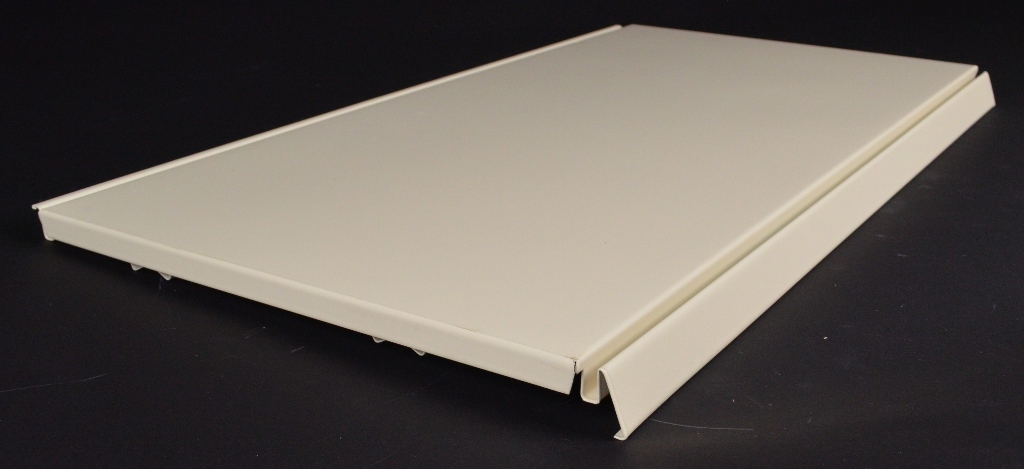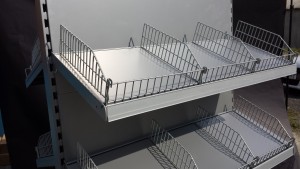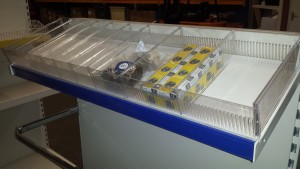
Shop Shelving Shelves – All you need and more!
Shop Shelving Shelves
There is not much to shelves in general, they just sit there and quietly do their job holding stuff, probably not even noticed most of the time. Shop shelving shelves in particular are rarely noticed by the customer popping in for a loaf of bread and a jar of coffee. That’s the way its meant to be, the products on the shop shelving shelves should be the focus. For this reason most shop shelves are a neutral RAL9001 cream colour.
However dig a bit deeper and there is a bit more to the average shop shelf than meets the eye. First of all lets see how shop shelving is manufactured. The video below shows the process of making metal shop shelves starting with a flat sheet of steel. Firstly the front and back edges and grooves are formed on an automated roller. Then the side edges are formed and finally stiffening bars are welded underneath (more about these later). After this the shelves are surface treated and powder coated before packing.
So you may ask why are the shop shelving shelves not just flat pieces of steel, what are all these grooves, lips and bars for? In most shops the price of the products are displayed on the shelf by using a plastic epos strip or ticket strip. The front lip of the shelf is formed at an angle specifically to hold the epos strip which in turn holds the price label. But what about the shelf grooves I hear you say, well sometimes retailers want to tilt the shop shelving shelves forward to display the products better. They need to stop everything sliding off the shelf so they use shelf risers along the front of the shelf to achieve this. Shelving risers can be made of many materials but the most common are plastic, acrylic or wire. In most shop shelving systems the risers just sit in a groove at the front of the shelf which holds them securely in place. Sometimes risers are used when the shelf is in the normal flat position too, to prevent product spillage.
The next step is to actually divide the shelf surface up into smaller sections, called binning. A very common example of this is with chocolate and confectionery where the different items are separated in neat rows. To achieve this shelf dividers are used and this is where the other shelf groove comes into play. Some types of divider have a prong that will locate in the rear groove and then the front of the divider will clip over the front shelf riser. Another common riser and divider system uses risers that are “toothed”, small grooves in them. If these plastic toothed risers are slotted in the front and rear shelf grooves then plastic shelf dividers can be slotted between the teeth to divide the shelf. See the pictures below of the two most common types of shop shelving risers and dividers.


Lets move onto the shelf strengtheners, these are self explanatory they stiffen the shelf and provide the load capacity. Normally the number of shelf strengtheners increases with the depth of the shelf. Shallow shop shelving shelves may have only 1 strengthener, whilst a deep shelf may have 3 or 4. The quantity of stiffeners used is often the first thing to be reduced when trying to make shop shelves cheaper. At Shelving Megastore we do not do this, but some lighter duty shop shelving systems do so beware.

